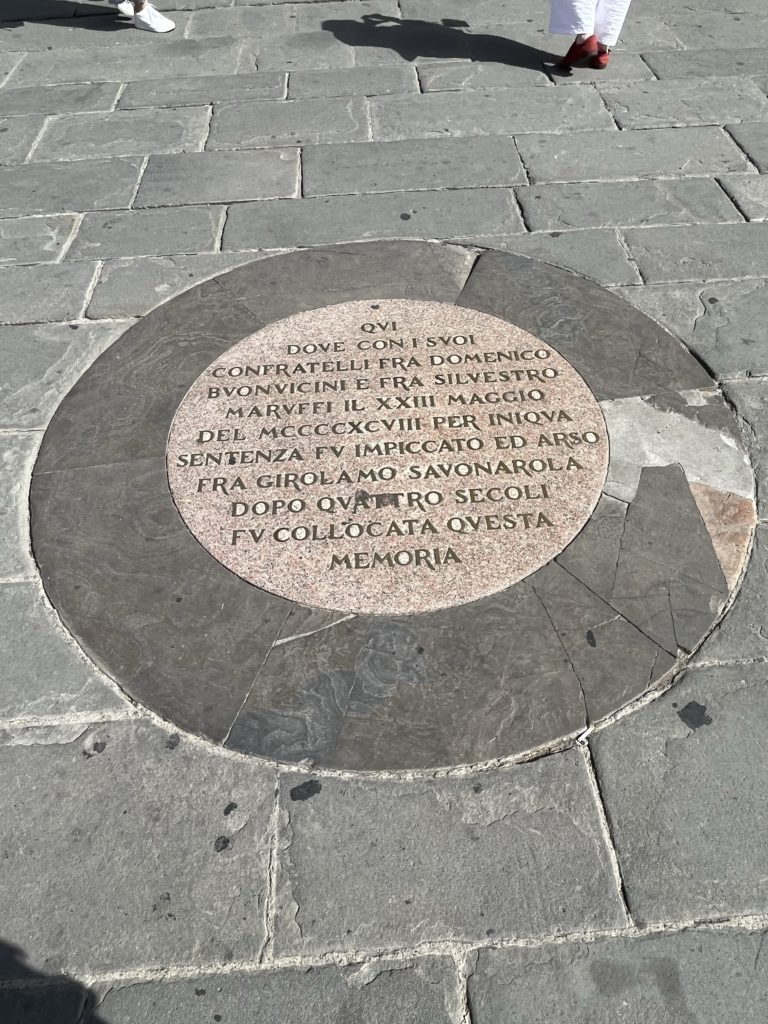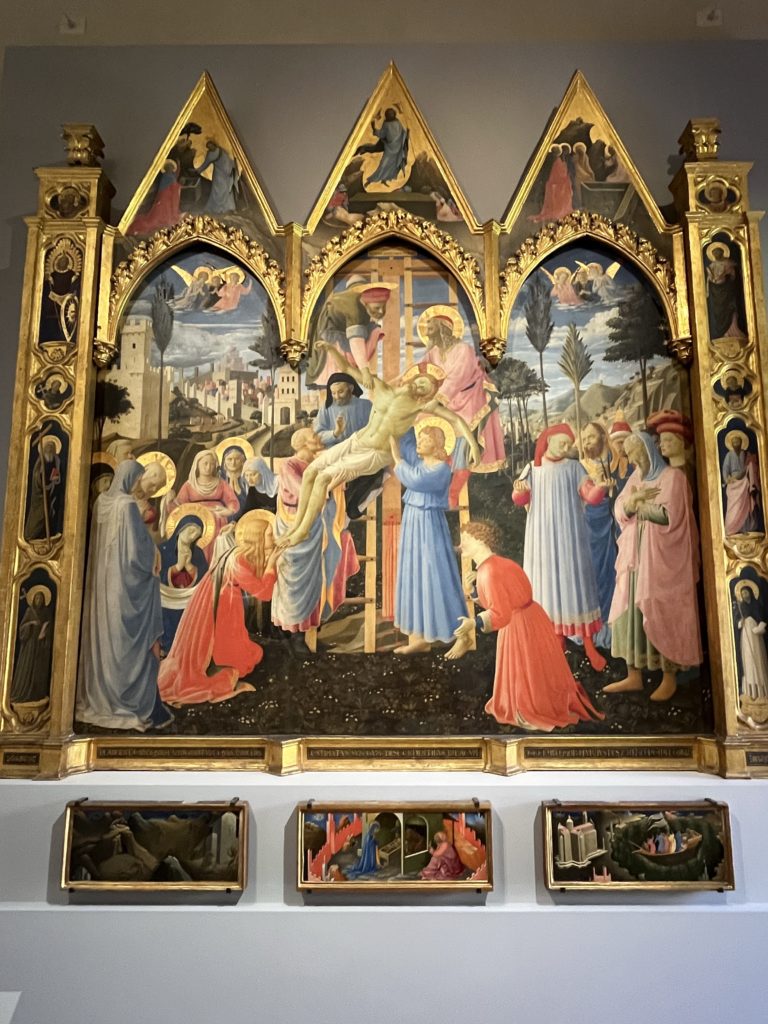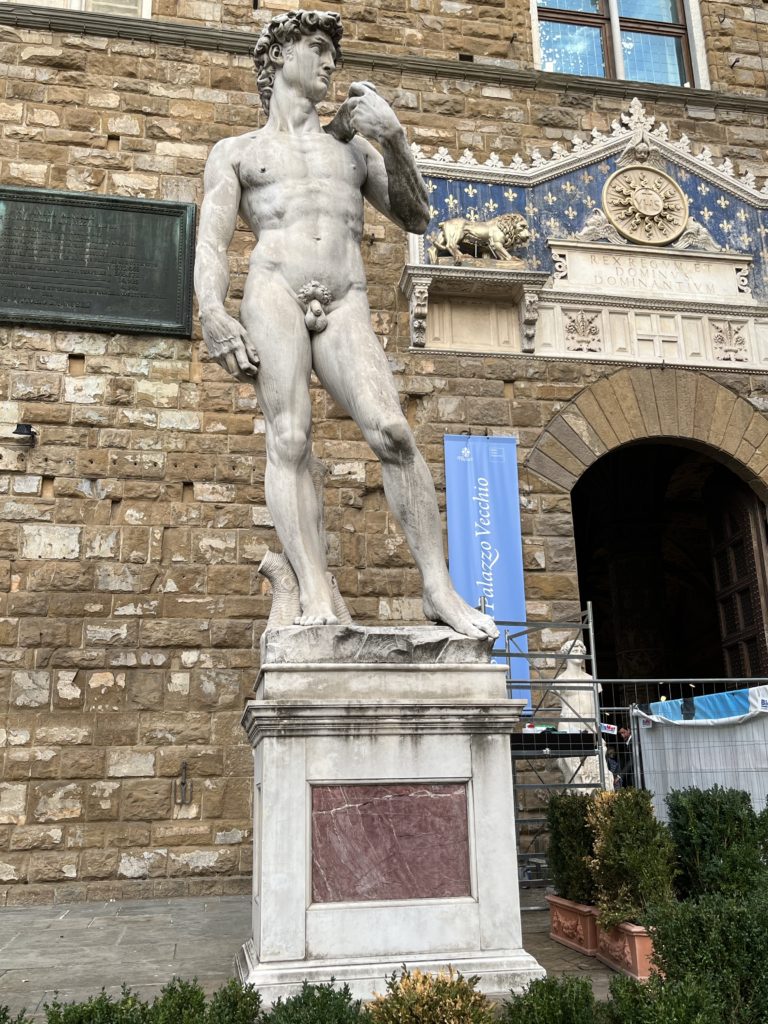
Today was our Savonarola day. Girolamo Savonarola (1452 – 1498 A.D.) was a Dominican monk who preached Truth in Florence in the 2nd half of the 15th century. Savonarola did so in the face of opposition from the most powerful man in Florence, Lorenzo de Medici, who had coopted Florence’s freedom, murdered political opponents, and bribed the Catholic church. Moderns practically worship Lorenzo de Medici because he promoted and financed the arts during the Italian Renaissance, but his rightful place in history is more dubious.
When de Medici sent his friends to persuade Savonarola to stop preaching against his corrupt practices, they became Savonarola disciples. De Medici then tried to bribe Savonarola, which also failed. But when de Medici was on his death bed and needed the last rites, instead of calling any number of priests loyal to him, he called on the one man he knew would speak Truth: Savonarola. At de Medici’s bedside, Savonarola asked de Medici if he placed his faith in God for his salvation, and if he would return all the money he had obtained unlawfully from others. His answer to both questions was “Yes.”
Unlike other preachers at the time, Savonarola preached directly from the Bible, and the Word changed peoples’ hearts, drawing them to repentance. Luther and other Reformers considered Savonarola a proto Protestant because of his doctrine on salvation by grace through faith. Florence, for a time, was a changed city, culminating in the so-called Bonfire of the Vanities, when people voluntarily set out their pornography and the clothes and masks they used for the Florentine version of Mardi Gras, into a bonfire in the Piazza della Signoria.
Unfortunately, the change was short-lived, and after preaching against corruption in the Catholic church, being excommunicated, and Florence being threatened with interdiction by the Pope, a rival group incited a mob to descend on the San Marco Convent and take Savonarola and two other monks away to the Piazza della Signoria, where they were hung and burned. But while the change in Florence didn’t last, Savonarola’s influence on individuals did. For example, Michelangelo, who had heard Savonarola preach, is said to have carried a book of Savonarola’s sermons with him for the rest of his life.
Today we walked ten minutes from the Duomo to San Marco Convent, where we saw Savonarola’s room at the convent, as well as the library where he was taken into custody by the mob. Later in the afternoon, we saw the plaque on the ground at the Piazza della Signoria commemorating the spot where he was martyred.

At San Marco convent we also saw the painting of Fra Angelico (1395-1455 A.D.), a Dominican Monk who lived at the convent, and whose paintings are highly coveted. We also saw some displayed in the Ufizzi Museum later in the day. It has been said of Fra Angelico “that he never handled a brush without fervent prayer and he wept when he painted the Crucifixion.” He’s an example for all on how to work inspired by God.
We ate lunch at San Marco square, which unfortunately was under construction. I wish I could tell you it was a beautiful, peaceful, enjoyable lunch but it was interrupted with crashing sounds from from the construction workers and equipment doing their work.
In the afternoon, we visited the Uffizi Museum to see Michelangelo’s statue of David, but it was not there. I asked one of the museum attendants, but he spoke very little English, and all I understood was “not here.” Still we saw an ancient Roman statue of Helena (mother of Constantine the Great), a Michelangelo, and a room at the back of the museum dedicated to Protestant painters, including our friends Cranach the Elder (Luther’s friend and the painter of the Reformation), his son, and Albrecht Durer.

We had an early dinner on the Piazza della Signoria looking across the square at the replica of Michelangelo’s David not 5o yards from the plaque where Savonarola was martyred, one representing beauty and the other Truth. The GSB team waits anxiously for the time when Florence will embrace not just the former, but both. GS

